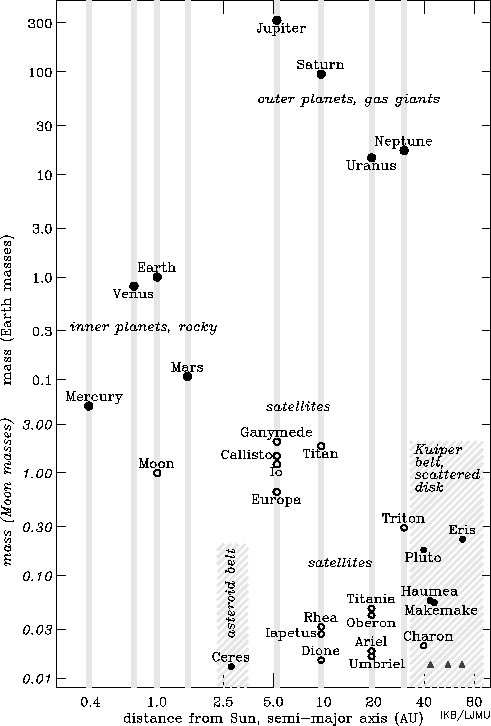The plot shown here has satellites represented as open circles and objects orbiting the Sun directly as filled circles. The y-axis represents mass in Moon masses and then Earth masses, while the x-axis is average distance from the Sun (semi-major axis) relative to the Earth-Sun distance (AU). Notably the eight planets are at least 1000 times more massive that any bodies in their orbital neighbourhood (except for the Earth relative to the Moon, which is a factor of 81). This is not true for Pluto and Eris (dwarf planets); and all known dwarf planets are less massive than seven of the solar system's satellites. Note also the census of dwarf planets and satellites beyond the orbit of Neptune is incomplete; the triangles represent candidate dwarf planets where the mass measurement is significantly uncertain.
Why not a geological definition for a planet such as objects being nearly round and in hydrostatic equilibrium? Well in fact this would include all the solar-system bodies plotted here. So if one excludes satellites, as has been the case for centuries, this would mean at least 13 planets (including Ceres, Pluto, Eris, etc.). However, one has applied a dynamical criteria (an object should orbit the Sun directly) and excluded Ganymede and Titan, which are 10-11 times more massive than Pluto. This is then not a strict geological definition. The resolution adopting eight planets for our solar system relies on the dynamical significance of these relative to the rest of the solar system bodies, and this is in fact clear cut.
Historical precedent can be used to justify the reclassification of Pluto. Ceres and other asteroids were initially called planets but then reclassified because they were better described as being part of the asteroid belt, which has no dynamically dominant body. This is similar to Pluto, which is one of many Kuiper belt objects, none of which are dominant.
